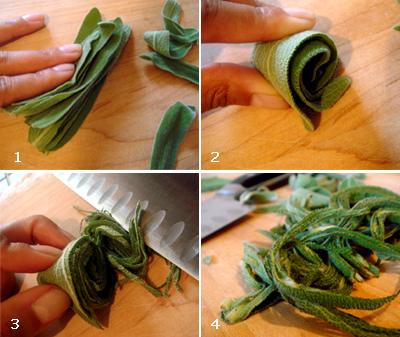In the culinary world, knife skills are essential for creating masterful dishes. A well-honed knife and proper technique can make all the difference between a clumsy preparation and a precision-cut masterpiece. In this article, we will explore ten essential knife skills that every aspiring chef should master to elevate their culinary creations.
:max_bytes(150000):strip_icc()/20230821-SEA-HowtoHoldAKnife-AmandaSuarez-00-c9c3058f5f21473f9c20a37699fbce27.jpg)
1. The Basic Knife Grip
The foundation of all knife skills starts with the proper grip. Hold the handle with a firm but not tight grip, allowing for control and flexibility. Your index finger should rest on the spine of the blade, providing stability and leverage. Practice this grip to develop confidence and precision in your cuts.
2. The Rock Chop
The rock chop technique is perfect for herbs and vegetables. Place the tip of your knife on the cutting board and use a rocking motion to slice through the ingredient. This technique offers excellent control and allows for consistent, even cuts.
3. The Julienne Cut
The julienne cut is ideal for creating thin, matchstick-like strips of vegetables. Start by cutting the ingredient into planks, then stack them and cut into thin strips. This technique adds visual appeal and texture to dishes like salads and stir-fries.

4. The Chiffonade Technique
Chiffonade is a fancy term for finely slicing leafy greens or herbs into thin ribbons. Stack the leaves, roll them tightly, and make thin, uniform cuts across the roll. Chiffonade is great for garnishing, adding delicate flavor, and enhancing the presentation of your dishes.
5. The Slice Technique
The slice is a fundamental knife skill used for cutting larger ingredients like meat or fish. Start with a stable surface for the ingredient and use a fluid motion to slice through it. Make sure to maintain a consistent thickness for even cooking and presentation.
:max_bytes(150000):strip_icc()/crispy-fried-oven-baked-potatoes-recipe-3051069-step-06-5c5603bcc9e77c000132a0c8.jpg)
6. The Mince Technique
Mincing involves cutting ingredients into tiny, uniform pieces. Start by creating a pile of the ingredient, then use a rocking motion with your knife to chop repeatedly until you achieve the desired size. Mincing is commonly used for garlic, onions, and herbs to release their flavors and incorporate them evenly into dishes.
7. The Brunoise Cut
Brunoise refers to finely dicing ingredients into small cubes. Start by creating a julienne cut, then stack and cut the strips into tiny cubes. This technique is useful for adding texture and even cooking to ingredients like root vegetables and aromatics.
8. The Batonnet Technique
Batonnet is a knife skill that involves cutting ingredients into long, rectangular sticks. Start by creating planks, then stack and cut them into uniform strips. Batonnet cuts are often used in dishes like stir-fries and vegetable medleys.
:max_bytes(150000):strip_icc()/Knife-Cuts-Tournee-FT-BLOG0123-49bcff58bedb46d8b7dc478a65ed3e71.jpg)
9. The Tourne Cut
The tourne cut is a more advanced and decorative technique used for shaping vegetables into oblong, seven-sided pieces. This technique requires a paring knife and precision. The tourne cut is commonly used for root vegetables and adds an elegant touch to dishes.
10. The Filleting Technique
The filleting technique is essential for removing bones and skin from meat or fish. Using a flexible boning knife, carefully follow the natural lines and contours of the flesh to separate it from the bones or skin. Mastering filleting allows for precise portioning and presentation of delicate proteins.
By honing these ten knife skills, aspiring chefs can take their culinary creations to new heights. Remember, practice makes perfect, so grab your knives, ingredients, and cutting board, and embark on a journey of culinary mastery. Happy slicing, chopping, and dicing!


